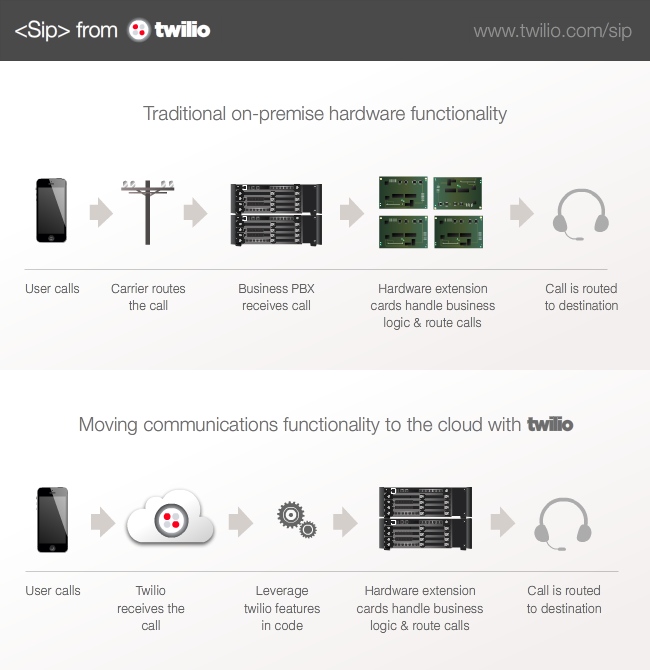
Twilio today announced its support of Session Initiation Protocol, or SIP. With this capability in its arsenal, users will be able to modify their communication processes using the Web programming language of their choice, while also helping to reduce the development cycles. What’s important to note here is that this move is perhaps Twilio’s first major step into moving more towards the enterprise, after years of being more for small businesses and individual developers.
Now SIP might not be terribly important for most people to care about, but for system administrators within larger companies, it could be.
Twilio says that there is a slow movement taking place whereby companies are moving away from public switch telephone networks and more towards Voice Over IP, or VoIP, of which SIP is involved with. In most cases, companies have had physical hardware installed on-premise and needed multiple ventures to come in and handle implementing customizations and even build out the call center.
With SIP, Twilio is hoping to help companies move all of the telephony logic out to the cloud the same way its handling dial technology. This includes conference calls, text-to-speech, custom routing tools, and more — basically instead of building the services inside the office, it’s handled within the cloud.
At this point, the three groups that will most likely derive some benefit from SIP from Twilio are those in the enterprise, specifically large companies that have already invested millions of dollars into technologies sitting in closets that require pricey and lengthy upgrades and are looking to cut down on costs; call centers that are doing inbound traffic; and developers who are interested in building new technologies on top of SIP.
What exactly is SIP? It’s defined as:
[A]n application layer protocol designed to be independent of the underlying transport layer; it can run on Transmission Control Protocol(TCP), User Datagram Protocol (UDP), or Stream Control Transmission Protocol (SCTP).It is a text-based protocol, incorporating many elements of the Hypertext Transfer Protocol (HTTP) and the Simple Mail Transfer Protocol (SMTP).
In short, it’s a protocol for setting up communication sessions over the Internet. Twilio says that with this technology, companies will be able to “experience higher quality communications, while at the same time reducing communication costs, leveraging their legacy investments, and speeding up development cycles.”
Joe McCorkle, director of IT & networking at RealPage, says:
Twilio’s platform, including the new SIP capabilities, enable us to quickly implement advanced functionality in our contact center. What’s more, we can customize and scale our application on an as-needed basis. A highly modern system being updated with simple API web development, significantly increases our ROI and decreases our mean time to value, while at the same time making the most out of our existing technologies.
For many years, SIP had only been available through major telecommunication companies and programming for this was a rare commodity. Now, Twilio looks to open it up to more people. It has already beta-tested this service with 20 to 40 active customers and Twilio says it will continue to improve the product — right now it’s a “minimum viable product” for SIP.
Companies that choose to use SIP from Twilio will find the pricing to be different than the services’s traditional pricing. SIP calls are around half of a cent per minute.
Photo credit: Joe Raedle/Getty Images
Get the TNW newsletter
Get the most important tech news in your inbox each week.





